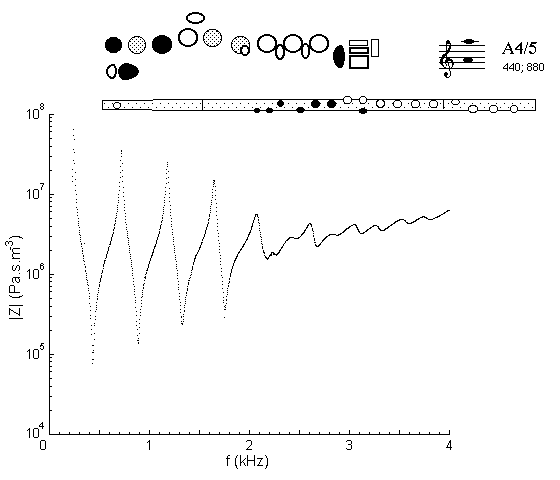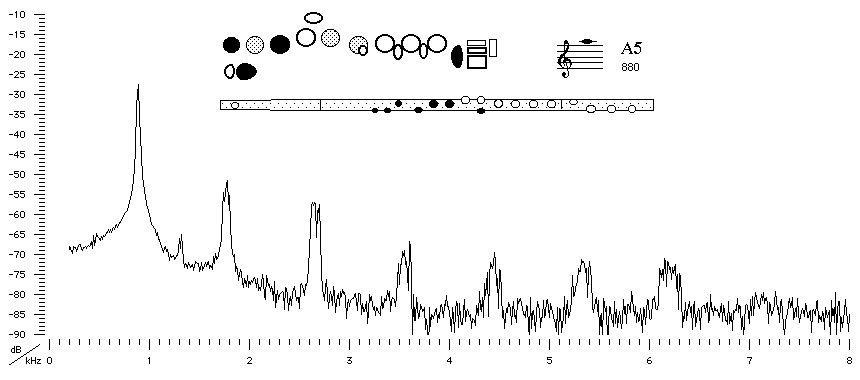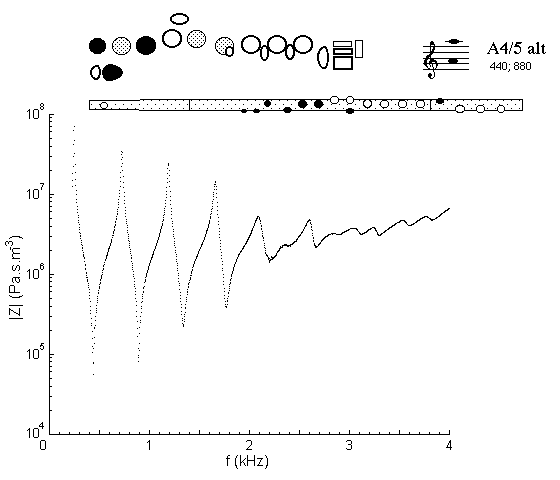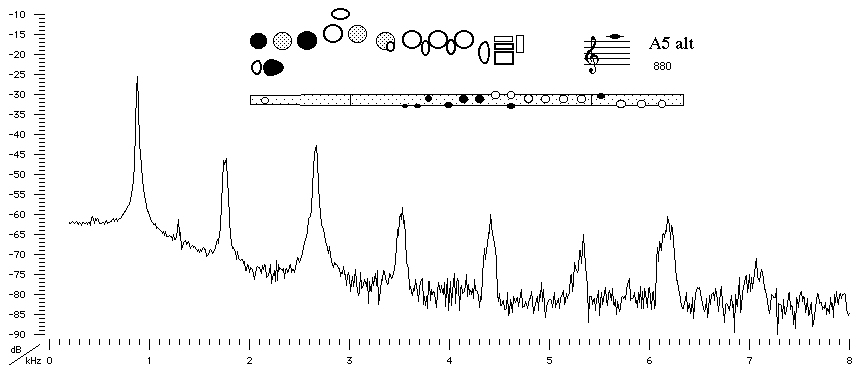| Acoustics of baroque, classical and modern flutes |
modern flute
|
A5 |

|
Fingering Acoustic schematic Non-specialist introduction
to acoustic impedance |
The flutist uses the same fingering for A4 and A5, but changes the speed, length and shape of the jet. The first four minima can be played. These minima support harmonics in A4. In A5, only the second and fourth minima are important. (Inaudible traces of the lower note are visible in the spectrum for A5 which has tiny bumps at harmonics of A4.)

Sound spectrum
of a modern flute with a B foot played using conventional
fingering for A5.
![]()
![]()
![]()
![]()
![]() You can hear A5
played with conventional fingering
by Geoffrey Collins.
You can hear A5
played with conventional fingering
by Geoffrey Collins.
Unvented Fingering |
modern flute B foot |

|
Fingering Acoustic schematic Non-specialist introduction
to acoustic impedance |
The rather small differences in the impedance spectrum, seen well above the cut-off frequency, have negligible difference in the playing regime, and the differences between the sound spectra are largely due to the variation produced by recording live musicians under comfortable conditions.

Sound spectrum of a modern flute with a B foot played using
unvented
fingering for A5.
![]()
![]()
![]()
![]()
![]() You can hear A5
played with unvented fingering
by Geoffrey Collins.
You can hear A5
played with unvented fingering
by Geoffrey Collins.
| Acoustic measurements are available for these flutes - modern B, modern C, classical C, classical D, classical flared, baroque Sound clips are available for modern B, classical flared and baroque |
To compare flutes, it is easiest to open a separate browser window for each instrument. |